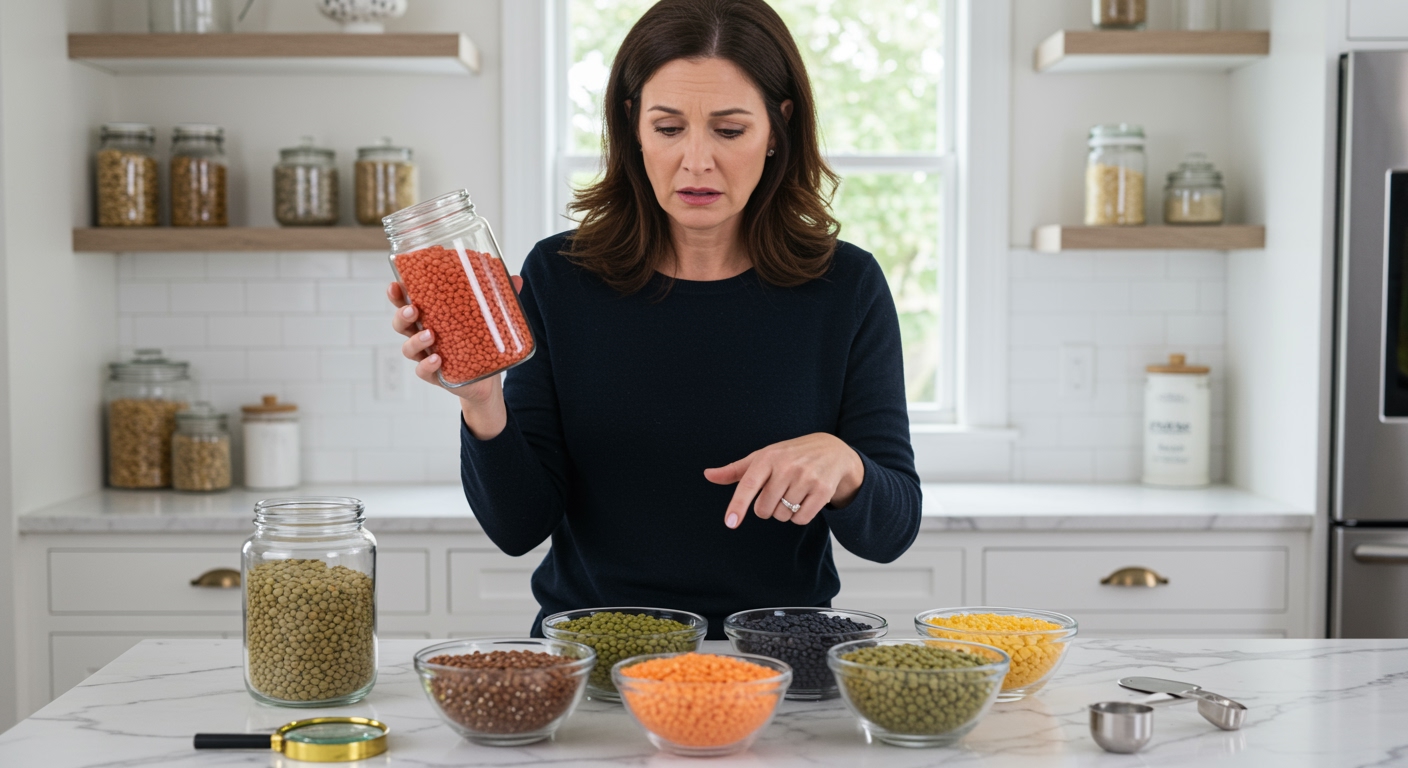✪ Key Takeaway: Lentils can contain dangerous levels of cadmium and lead from contaminated soil and water sources.
Introduction
You reach for that bag of lentils thinking you are making the healthiest choice possible.
But what if I told you that your favorite protein-packed legumes might be silently poisoning your body with heavy metals like cadmium and lead.
Hi, I am Abdur, your nutrition coach and today I am going to expose the hidden truth about heavy metal contamination in lentils and show you how to protect your family from these toxic threats.
How Do Heavy Metals Get Into Lentils?
Lentils act like tiny metal magnets in contaminated environments.
These legumes absorb cadmium and lead directly from polluted soil through their root systems.
Industrial activities, mining operations, and contaminated irrigation water create the perfect storm for heavy metal accumulation in crops.
Research shows that lentils grown in certain regions contain cadmium levels that exceed safe consumption limits.
The problem becomes worse when farmers use phosphate fertilizers that naturally contain cadmium as an impurity.
Your body cannot distinguish between essential minerals and toxic metals, so it absorbs both through the same transport pathways in your intestines.
✪ Fact: Lentils can accumulate up to 10 times more cadmium than other crops grown in the same soil.
What Happens When You Eat Contaminated Lentils?
Cadmium slowly builds up in your kidneys and liver over years of exposure.
This toxic metal interferes with your body’s ability to process essential minerals like zinc, iron, and calcium.
Lead contamination attacks your nervous system and can cause cognitive problems, especially in children whose developing brains are most vulnerable.
Studies link chronic cadmium exposure to kidney disease, bone weakness, and increased cancer risk.
The scary part is that symptoms often do not appear until significant damage has already occurred.
Your body stores these metals in organs and bones, where they remain for decades causing ongoing cellular damage through oxidative stress.
✪ Note: Heavy metals can remain in your body for 10-30 years after exposure stops.
Which Lentil Varieties Are Most Contaminated?
Red lentils consistently show the highest cadmium levels across multiple studies.
Black lentils and green lentils typically contain moderate amounts of heavy metals.
Yellow lentils often have lower contamination rates, but this varies significantly by growing region.
Lentils from certain countries consistently test higher for heavy metals due to industrial pollution and mining activities.
Organic certification does not guarantee heavy metal safety because these toxins come from soil contamination, not pesticide use.
Split lentils may actually contain higher concentrations because the hulling process can concentrate metals in the remaining seed portions.
✪ Pro Tip: Choose lentils from regions with strict heavy metal testing and cleaner agricultural practices.
How Can You Reduce Heavy Metal Exposure From Lentils?
Soaking lentils for 12-24 hours before cooking can reduce cadmium content by up to 25 percent.
Always discard the soaking water and rinse thoroughly with fresh water multiple times.
Cooking lentils in excess water and draining afterward removes additional water-soluble metals.
Rotate between different legume sources instead of eating the same lentil variety every day.
Look for brands that voluntarily test for heavy metals and publish their test results publicly.
Consider limiting lentil consumption to 2-3 servings per week rather than making them a daily staple, especially for pregnant women and young children.
✪ Fact: Proper soaking and cooking methods can reduce heavy metal content by 20-40 percent.
Should You Stop Eating Lentils Completely?
The answer is absolutely not, but you need to be smart about it.
Lentils provide exceptional nutrition including protein, fiber, folate, and iron that support overall health.
The key is choosing high-quality sources and using proper preparation methods to minimize contamination.
Many people eat lentils regularly without problems because their overall diet includes foods that help the body eliminate heavy metals.
Foods rich in antioxidants, sulfur compounds, and certain minerals can actually protect against heavy metal damage.
The benefits of eating lentils likely outweigh the risks for most people when consumed as part of a varied, nutrient-dense diet.
✪ Pro Tip: Include cilantro, garlic, and cruciferous vegetables in meals with lentils to support natural detoxification.
The Bottom Line
Heavy metal contamination in lentils is a real concern that requires your attention, but it should not scare you away from these nutritious legumes entirely.
Knowledge is your best defense against hidden toxins in your food supply.
I would love to hear your thoughts about this topic and whether you have noticed any changes in how you choose and prepare lentils after reading this information, so please share your questions or experiences in the comment section below.
References
At NutritionCrown, we use quality and credible sources to ensure our content is accurate and trustworthy. Below are the sources referenced in creating this article:

